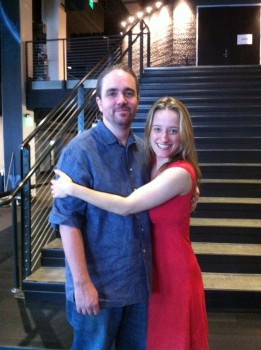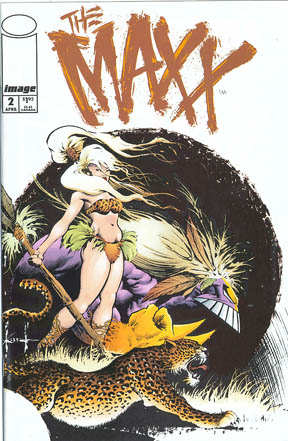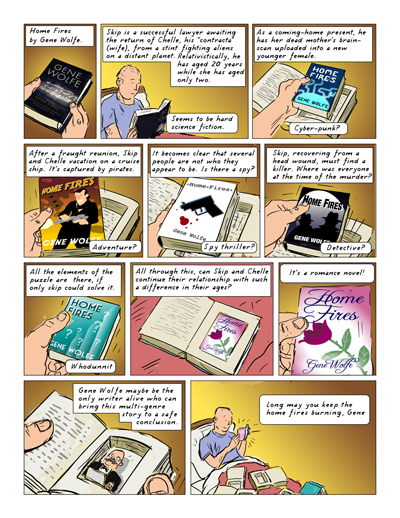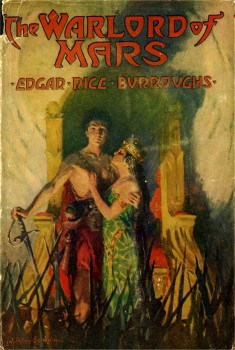 Although there are still eight more books to go in the Mars series, with The Warlord of Mars I can bring to a conclusion Phase #1 of the saga: this completes the “John Carter Trilogy,” and the books that follow it take different paths with new heroes. John Carter will not return to the protagonist role until the eighth book, Swords of Mars, published twenty-one years later.
Although there are still eight more books to go in the Mars series, with The Warlord of Mars I can bring to a conclusion Phase #1 of the saga: this completes the “John Carter Trilogy,” and the books that follow it take different paths with new heroes. John Carter will not return to the protagonist role until the eighth book, Swords of Mars, published twenty-one years later.
At the end of the thrill-ride of The Gods of Mars, John Carter lost his love Dejah Thoris in the Chamber of the Sun within the Temple of Issus. A whole year must pass before the slow rotation of the chamber will allow Dejah Thoris to escape. She may not even be alive, since the last moments that John Carter witnessed, the jealous thern woman Phaidor was ready to stab Carter’s love. Did she kill Dejah Thoris? Or did the noble Thuvia take the blow instead?
Readers hung on through the middle of 1913 until Burroughs brought a conclusion to the John Carter epic at the end of the year and made his hero into The Warlord of Mars.
Our Saga: The adventures of Earthman John Carter, his progeny, and sundry other natives and visitors, on the planet Mars, known to its inhabitants as Barsoom. A dry and slowly dying world, Barsoom contains four different human civilizations, one non-human one, a scattering of science among swashbuckling, and a plethora of religions, mystery cities, and strange beasts. The series spans 1912 to 1964 with nine novels, one volume of linked novellas, and two unrelated novellas.
Today’s Installment: The Warlord of Mars (1913–14)
Previous Installments: A Princess of Mars (1912), The Gods of Mars (1913)
The Backstory
With a cliffhanger ending to The Gods of Mars, Burroughs was ready to roll with the conclusion. It was a ferociously busy time in his life: All-Story rejected his second Tarzan novel — one of the most comically blockheaded decisions in the history of magazine fiction; he quit his day job and became a full-time author; his third son John Coleman Burroughs was born; days later, his father George Tyler Burroughs died. In the middle of all this, ERB plunged back to working on Mars. He never developed an outline for the trilogy, and so he took the wrap-up of John Carter’s story as it came, daydreaming down on paper.
…
Read More Read More
 Vampire Fashionistas, Flesh-Eating Ogres, Paranoid Werewolves and Sugar-Addicted Zombies…
Vampire Fashionistas, Flesh-Eating Ogres, Paranoid Werewolves and Sugar-Addicted Zombies… Last Wednesday, DC Comics announced a new publishing venture: “Before Watchmen,” a set of related miniseries that would act as a prologue to the best-selling and critically acclaimed Watchmen graphic novel. The news was met with a considerably mixed reaction. Alan Moore, writer and primary creator of Watchmen, has spoken out against the project. Personally, I’m not going to buy any of DC’s new series, and I want to explain why.
Last Wednesday, DC Comics announced a new publishing venture: “Before Watchmen,” a set of related miniseries that would act as a prologue to the best-selling and critically acclaimed Watchmen graphic novel. The news was met with a considerably mixed reaction. Alan Moore, writer and primary creator of Watchmen, has spoken out against the project. Personally, I’m not going to buy any of DC’s new series, and I want to explain why.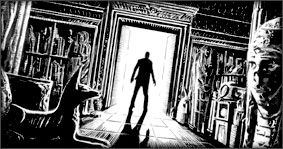 While
While  Although there are still eight more books to go in the Mars series, with The Warlord of Mars I can bring to a conclusion Phase #1 of the saga: this completes the “John Carter Trilogy,” and the books that follow it take different paths with new heroes. John Carter will not return to the protagonist role until the eighth book,
Although there are still eight more books to go in the Mars series, with The Warlord of Mars I can bring to a conclusion Phase #1 of the saga: this completes the “John Carter Trilogy,” and the books that follow it take different paths with new heroes. John Carter will not return to the protagonist role until the eighth book, 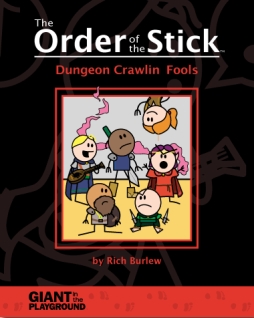 Dying is easy, the old saw has it, but comedy … that’s hard. Only — what happens if we’re talking about a world in which miracles happen to order, and people come back to life whenever a priest wants? Dying suddenly isn’t quite so easy. But comedy, real comedy … that’s still pretty hard.
Dying is easy, the old saw has it, but comedy … that’s hard. Only — what happens if we’re talking about a world in which miracles happen to order, and people come back to life whenever a priest wants? Dying suddenly isn’t quite so easy. But comedy, real comedy … that’s still pretty hard.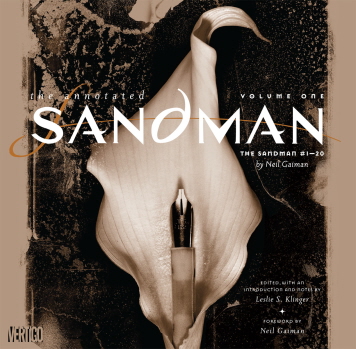
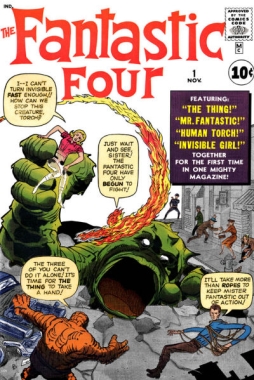 There are two different stories about how it began.
There are two different stories about how it began.